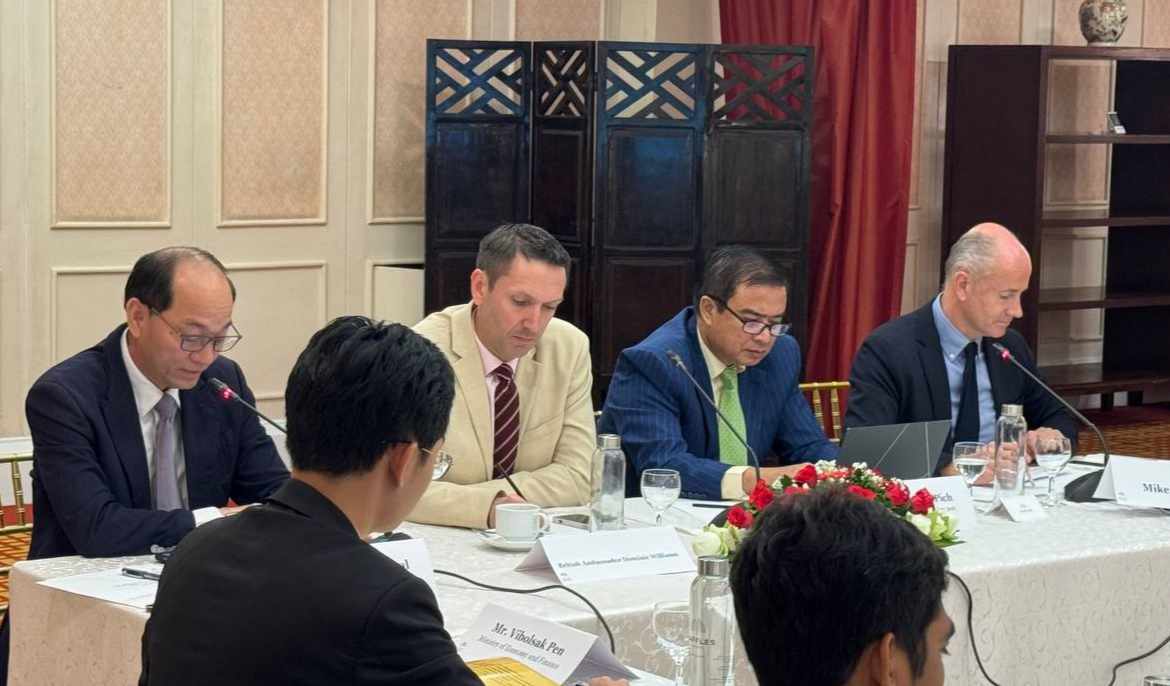Cambodia Investment Review
The British Embassy Phnom Penh, in partnership with the British Chamber of Commerce Cambodia (BritCham), has convened a high-level forum on regenerative urbanism aimed at advancing sustainable urban development strategies across Cambodia. Held at Raffles Hotel Le Royal, the event gathered senior government officials, architects, urban planners, and private sector leaders to share insights on building inclusive, resilient, and investment-ready cities.
The forum received strong institutional backing from key Cambodian ministries, including the Ministry of Public Works and Transport, Ministry of Economy and Finance, and Ministry of Land Management, Urban Planning and Construction—underlining the government’s growing commitment to aligning urban planning with long-term economic and environmental sustainability.

Designing Cities to Withstand Future Pressures
British Ambassador to Cambodia Dominic Williams MBE opened the forum, emphasizing the UK’s dedication to supporting Cambodia’s next stage of growth through sustainable infrastructure and high-quality design.
“We believe collaborating on infrastructure, including through architecture and design, is critical to boosting Cambodia’s competitiveness and supporting its development ambitions,” he noted. Citing landmark British-designed buildings such as Vattanac Capital Tower, Exchange Square, and Chip Mong Tower, Williams stressed that investing in good design delivers long-term value by ensuring buildings remain useful and attractive over time.
Mike Collins, Head of Infrastructure for Asia Pacific at the UK Department for Business and Trade, provided a keynote address positioning regenerative urbanism as a framework that integrates planning, policy, and investment. “The cities of tomorrow need to be many things: inclusive, resilient, and well-planned. This event is about unlocking that potential by bringing together design and investment strategies,” Collins said.

Practical Takeaways and Global Examples
The day’s agenda featured interactive discussions and case studies highlighting successful regeneration projects and challenges faced in urban planning. Delegates explored a wide range of topics, including:
- “What Has Gone Wrong?” – An interactive session assessing past urban development missteps and how to avoid them.
- Global Innovation in Design – Presentations from architecture firms PLP and Broadway Malyan, with examples of transformative urban projects worldwide.
- King’s Cross Case Study – A deep dive into London’s King’s Cross redevelopment, showcasing how green space integration and planning policy can attract talent and capital.
- Policy and Investment Frameworks – Discussions focused on making upcoming Cambodian projects more bankable, and on aligning policy with foreign direct investment goals.
The forum aimed to move beyond discussion and toward action. Participants concluded the day with a collaborative wrap-up session identifying key stakeholder roles and next steps for embedding regenerative principles into Cambodia’s urban growth plans.

UK-Cambodia Collaboration in Urban Planning
This event represents a deepening of UK-Cambodia ties in infrastructure and urban development, with a particular focus on sustainable and future-proof approaches. British expertise in urban design was spotlighted through references to major Phnom Penh landmarks—Vattanac Capital Tower, designed by Farrells, and both Exchange Square and Chip Mong Tower, designed by Aedas—serving as tangible examples of how thoughtful architecture can shape modern urban identity.
By convening both government and private sector voices, the forum has laid the groundwork for future partnerships that aim to balance growth with livability—an increasingly urgent issue in fast-developing economies like Cambodia.
As cities across Southeast Asia grapple with the pressures of rapid urbanization, Cambodia’s approach to regenerative urbanism may well serve as a regional model—particularly if it continues to attract international expertise and capital willing to invest in long-term, community-centric development.


